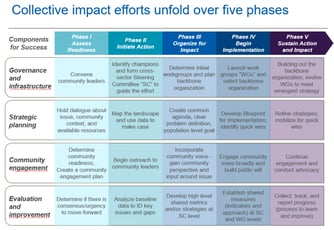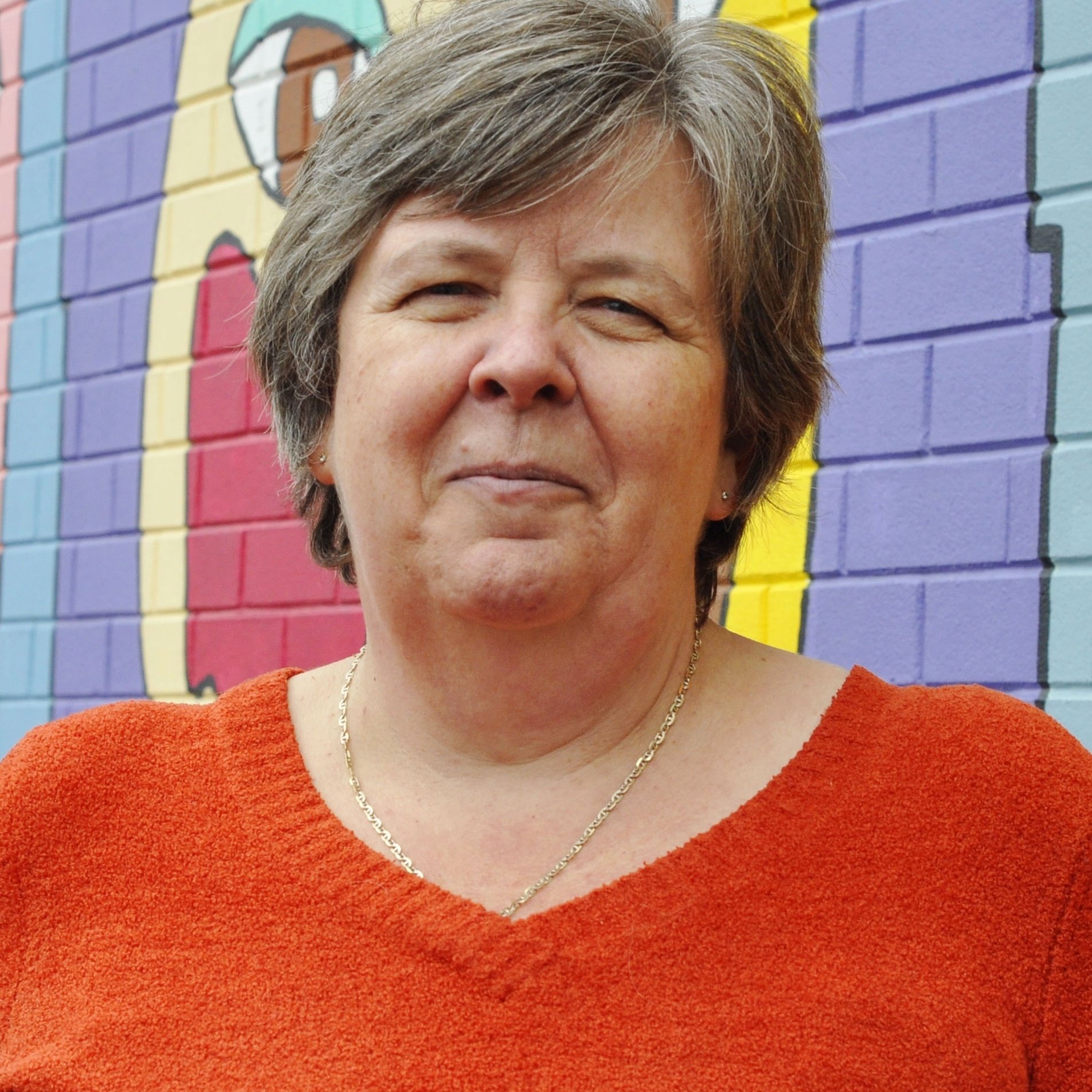Collective Impact is a framework that is being used by many communities to tackle complex problems. At the heart of the framework is the notion of bringing together diverse voices (business, government, community organizations and citizens) to deeply understand the problem and begin to develop strategies to address the systems context and policy barriers. The Collective Impact framework consists of five core conditions: the development of a common agenda that is shared amongst all stakeholders; shared measurement strategies to understand if progress is being made; engaging in mutually reinforcing activities; continuous communications and the support of backbone infrastructure.
framework is the notion of bringing together diverse voices (business, government, community organizations and citizens) to deeply understand the problem and begin to develop strategies to address the systems context and policy barriers. The Collective Impact framework consists of five core conditions: the development of a common agenda that is shared amongst all stakeholders; shared measurement strategies to understand if progress is being made; engaging in mutually reinforcing activities; continuous communications and the support of backbone infrastructure.
Implicit in the Collective Impact approach is that the collaborative planning table tries to advance all the conditions effectively to both shape and measure change and impact. But how does this practically happen? In 2016, the Tamarack Institute developed the Collective Impact Self Assessment and Planning Tool. This tool is designed as a reflective practice for members of Collective Impact planning tables.
We have learned that Collective Impact efforts tend to evolve over time, and that there are distinct phases to this collaborative effort. It usually takes a typical Collective Impact effort three to five years to work their way through each of the phases, although some may move faster and others slower depending on who are engaged and the readiness of the community to change.
The Collective Impact Self Assessment and Planning Tool specifically focuses on the core elements required to advance collective work including governance and infrastructure; strategic planning; community engagement and evaluation and improvement.
Tamarack has facilitated Collective Impact groups in the application of the self-assessment tool to their collaborative efforts. The tool provides both reflective questions designed to prompt thinking and an assessment as to the progress you are making. At the end of each section, participants are encouraged to write their comments.
We have learned that Collective Impact efforts often find themselves crossing across the phases. For example, the effort might have in place strong governance practices but have not focused on community engagement.
We invite you and your Collective Impact effort to use the self assessment tool. Let us know how it works for you and any suggestions you might have to improve and adapt the tool. This is one of many practical tools that will be shared at the Collective Impact 3.0 workshop happening in Kitchener, May 9-11, 2017. If you want to kick start or improve your collective impact effort, this is a workshop that you will want to attend.
Learn More
- Download the event flyer and register for Tamarack’s new Collective Impact 3.0 workshop, May 9-11, in Kitchener, ON
- Access Tamarack’s Collective Impact Idea Area for practical tools, blog posts and resources
- Download the Collective Impact Self Assessment and Planning Tool
- Learn more about the Tamarack Team





